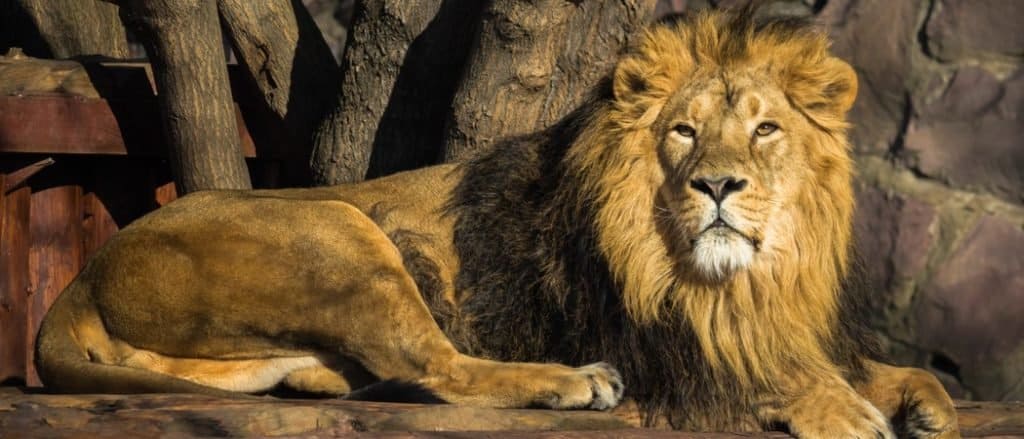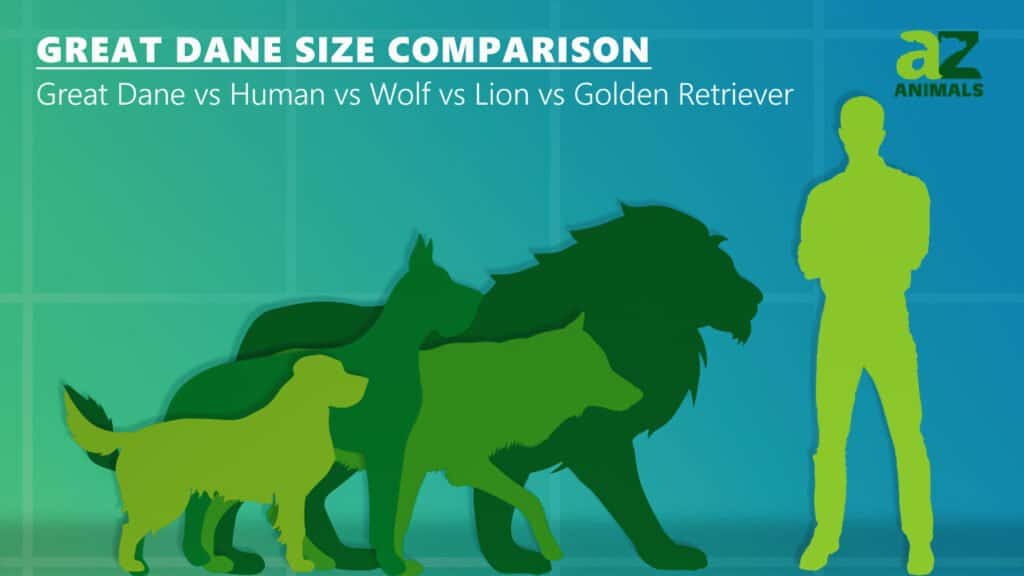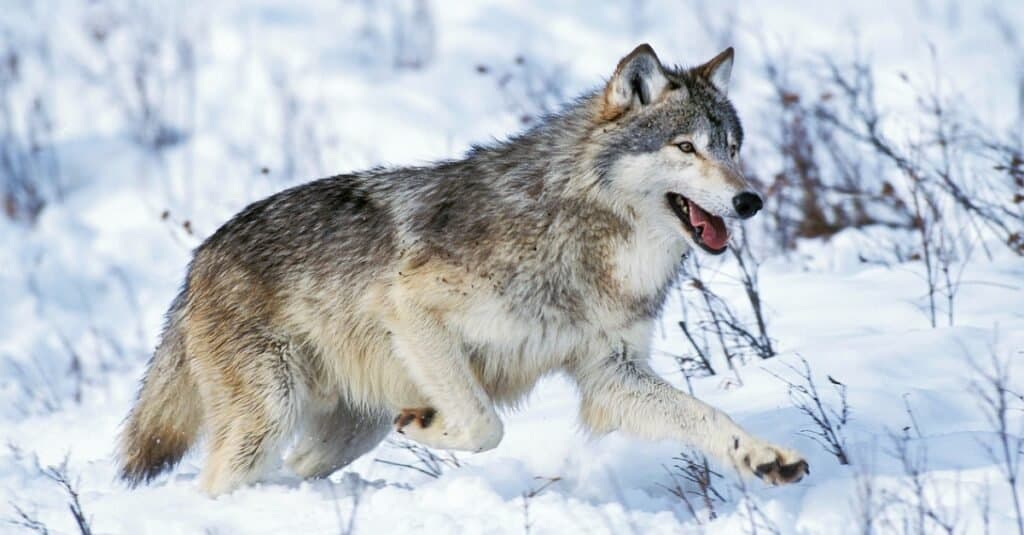Wolves, the largest of the wild dog species, inhabit the Siberian and Canadian Rocky Mountain forests. Some of them have been released again in the United States. Furthermore, zoos throughout the world frequently amass collections of these animals. When comparing domestic dogs and cats, we tend to be deceived by the seeming similarity in size. Nonetheless, the largest felines are far bigger than the biggest canines. Wolves tend to be the largest of the canine species. The most common species, the Gray wolf, weighs between 80 and 100 pounds on average but can reach a whopping 175 pounds. They’re roughly 30 inches tall when measured by the shoulder. There is a theoretical upper limit of 78 inches for the total length of an adult male wolf from head to tail.
In this post, we will explore the 3 types of wild cats in existence today that tower over even the biggest wolves! We will also explain why wild cats have evolved to grow much bigger than wild dogs. So, let’s kick things off with the 3 largest cats and how they compare to wolves!
3 Cats Bigger Than wolves
| Wild Cat Type | Max. Body Length (including head/tail) | Max. Body Height (at shoulders) | Average Weight (pounds) |
|---|---|---|---|
| Siberian Tiger | 144 inches | 48 inches | 690 lbs. |
| Bengal Tiger | 120 inches | 43 inches | 490 lbs. |
| Asiatic Lion | 115 inches | 42 inches | 418 lbs. |
1. Siberian Tiger

The Siberian
tiger
is the current record holder for the largest tiger species.
A tiger is the biggest of all big cats and the third-largest terrestrial predator overall. In the wild, these felines can reach a height of 4 feet at the shoulder and weighs more than 800 pounds. The Siberian tiger is the current record holder for the largest tiger species. One captive-bred Siberian tiger named Jaipur weighed over 900 pounds and measured about 11 feet (144 inches) from nose to tail. That’s the same as a telephone pole in terms of weight and just about a giraffe’s height in terms of length!
Tigers can vary in weight from 140 to 700 pounds. Yes, that’s a huge variation, but it explains why there are so many tiger subspecies. Siberian tigers typically weigh roughly 690 pounds, about the same as a giant vending machine, and are approximately 9 to 10 feet in length.
2. Bengal Tiger

The maximum length for a Bengal tiger is 10 feet (120 inches), and its maximum weight is 490 pounds!
©Paul Mannix / CC BY 2.0, Flickr – License
The Bengal tiger, often known as the Indian tiger, is the most prevalent type of tiger, and this subspecies makes up about 50% of all wild tigers. At the shoulder, Bengal tigers average about 3.6 feet in length or 43 inches. The maximum length for a Bengal tiger is 10 feet (120 inches), and its maximum weight is 490 pounds!
3. Asiatic Lion

Asiatic lions typically reach a length of 6.5 feet from their nose to the base of their tail.
©tgladkova/Shutterstock.com
Lions are the fourth largest terrestrial predator after tigers, polar bears, and grizzlies. No lion is bigger than the Asiatic lion, and male lions can reach heights of nearly four feet at the shoulder. In 1620, a lion in Asia was hunted that weighed 675 pounds, making it the biggest Asiatic lion ever recorded. But often, wild Asiatic lions don’t exceed 418 lbs. Asiatic lions typically reach a length of 6.5 feet from their nose to the base of their tail. Like other large cats, they can reach lengths of up to 10 feet!
Near Mount Kenya, researchers documented a massive wild African lion male that measured 11 feet in length and weighed an astonishing 600 pounds! It’s not uncommon for an adult lion to weigh as much as 550 pounds, although some weigh as little as 330 pounds (if you call that little). The world’s largest lion, which lived from 1936 until it died in 1997, tipped the scales at 690 pounds, or about the same as a standard motorcycle.
There are multiple distinct subspecies of lions, each with its unique physical characteristics and size range. The West African lion is the smallest type of lion, while the Barbary lion, considered extinct, was the largest.
Why Wild Cats Are Bigger than Wild Dogs

Wild cats are larger than wild dogs, even though they live in the same environment and hunt the same kinds of prey. The reasoning behind this is entirely dependent on each species’ preferred method of hunting. Both cats and dogs will mature to the size necessary to hunt and kill the largest prey they can get in their respective habitats.
For example, wolves today hunt in packs to take down musk ox, bison, and the largest deer in their habitats. Smaller animals, such as wild dogs or hyenas, can be easily killed by these predators without safety in numbers. However, most wild cats, apart from lions, hunt alone or with minimal help. Therefore, to bring down an animal of such size, a wild cat would need to be significantly stronger and more muscular than a dog.
Dogs hunt larger creatures by wearing them down through a combination of endurance, pack cognition, and nipping and biting. Cats engage in wrestling and grappling with prey of a larger size. Therefore, dogs can be much smaller than cats yet still be able to kill enormous prey.
In Conclusion

Gray wolves are considered elegant predators and highly social animals that form tight, nuclear packs.
©iStock.com/slowmotiongli
There will always be bigger wild cats than dogs in any environment where both share the same prey animals. Let us not forget that hominins triggered a huge extinction catastrophe within the previous half-million years that wiped off many more large animals than exist now. Therefore, in theory, we can include saber-toothed cats, which were far larger than the Panthera big cats, and enormous cats, such as cave lions, which were even bigger than the Siberian Tiger. However, even if we stack them up against comparatively large wolves, such as the extinct Dire wolf and Epicyon wolf, these big cats will still come out on top in terms of size. The bottom line is that in every ecosystem supporting canines over the past 10 million years, a cat has been present and substantially larger.
The photo featured at the top of this post is © iStock.com/mtnmichelle
Thank you for reading! Have some feedback for us? Contact the AZ Animals editorial team.






